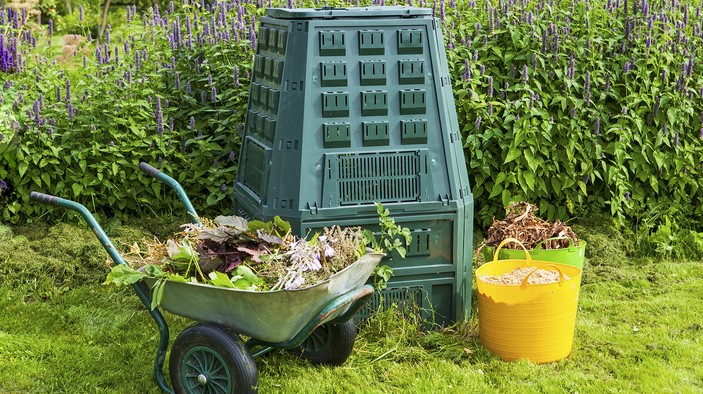
Source:https://cdn.mos.cms.futurecdn.net
In today’s world, where environmental consciousness is at an all-time high, more gardeners are turning to sustainable practices that benefit both the environment and their gardens. One such practice is composting, an excellent way to reduce waste while enriching the soil in your garden. DIY composting systems offer a simple and cost-effective way to create nutrient-rich compost that can enhance the health and productivity of your plants. This article will guide you through the basics of DIY composting systems, their benefits, and how to set up a system that works best for your needs.
The Benefits of DIY Composting Systems
Composting is a natural process where organic waste breaks down into humus, which is packed with nutrients that are beneficial to plants. By creating a DIY composting system, you’re not only giving your plants a natural, homemade fertilizer, but you’re also diverting waste from landfills, helping to reduce your carbon footprint. Below are some key benefits of composting at home:
1. Environmental Impact
One of the most significant benefits of composting is its positive environmental impact. Food waste, yard clippings, and other organic materials that end up in landfills often release methane, a potent greenhouse gas. Composting helps to divert these materials from landfills, reducing methane emissions and lowering your environmental footprint. By composting at home, you’re making a conscious effort to keep organic waste out of the landfill, contributing to a cleaner environment.
2. Soil Enrichment
Compost is often referred to as “black gold” by gardeners due to its ability to improve soil quality. The nutrient-rich compost helps to increase the organic matter in the soil, improving soil structure, water retention, and aeration. This can make a significant difference in plant growth, especially in clay-heavy or sandy soils. Composting not only provides nutrients but also helps balance pH levels in the soil, fostering an environment conducive to healthy plant roots.
3. Cost-Effective and Sustainable
Creating your own compost at home is a cost-effective alternative to purchasing chemical fertilizers or store-bought compost. With a few simple materials and tools, you can create a continuous supply of rich compost for your garden. In addition to saving money on fertilizers, composting allows you to recycle organic waste from your kitchen and yard, reducing your reliance on external resources. This closed-loop process is a great example of sustainable gardening practices.
Setting Up Your DIY Composting System
Setting up a DIY composting system is simpler than you might think. The key is to find a system that fits your space, lifestyle, and gardening goals. Whether you have a large yard or live in an apartment, there are composting solutions for every situation. Let’s take a look at a few popular types of composting systems and how to set them up:
1. Traditional Compost Pile
The most basic and common composting system is the traditional compost pile. This method requires a dedicated space in your yard where you can stack organic materials. It’s an excellent option for those with ample space who want to manage a larger amount of composting materials.
To start a traditional compost pile:
- Choose a dry, shady spot in your garden with good airflow.
- Layer green materials (e.g., food scraps, grass clippings) with brown materials (e.g., dry leaves, straw). These layers should be about 3–4 inches thick each.
- Turn the pile every few weeks to introduce oxygen and promote decomposition.
- Keep the pile moist but not wet. The compost should feel like a wrung-out sponge.
- After a few months, your compost should be dark, crumbly, and odor-free, signaling it’s ready to use.
2. Compost Bin
For smaller spaces or tidier options, a compost bin is a great alternative. Compost bins contain the materials more efficiently and often have lids to keep animals away. There are many pre-made compost bins available, or you can easily build your own using wood or recycled materials. The benefit of a compost bin is that it’s more compact, which works well for urban gardeners or those with limited outdoor space.
To set up a compost bin:
- Choose a bin with good airflow, either through ventilation holes or a wire mesh design.
- Place the bin in a convenient spot that gets some sunlight but is not directly exposed to heat.
- Add your green and brown materials in layers, similar to the traditional pile, but without turning the compost as frequently. The bin’s enclosed space promotes quicker decomposition.
- Check the moisture regularly and stir the contents occasionally to maintain aeration.
- Once the compost is dark and crumbly, it’s ready for use in your garden.
3. Vermicomposting (Worm Composting)
If you’re working with limited space or need a low-maintenance composting solution, vermicomposting may be ideal. This method uses worms, typically red wigglers, to break down organic material. Vermicomposting is excellent for apartment dwellers or those with small balconies because it can be done in a small bin or container.
To set up a vermiculture composting system:
- Get a worm bin with a secure lid and aeration holes.
- Add bedding material, such as shredded newspaper, cardboard, or coconut coir, to the bottom of the bin.
- Introduce red wiggler worms (these can be purchased online or at your local garden center).
- Feed the worms food scraps like vegetable peels, coffee grounds, and egg shells. Avoid meat, dairy, and oily foods.
- Keep the bin in a cool, dark place, such as under the sink or in a basement.
- After 3–6 months, you’ll have nutrient-rich worm castings that are perfect for boosting plant growth.
4. Compost Tumbler
For those looking for a faster composting process, a compost tumbler might be the answer. Compost tumblers are containers that can be rotated, which accelerates the breakdown of organic materials. This method is ideal for gardeners with limited space who want compost more quickly.
To set up a compost tumbler:
- Select a tumbler that is large enough to accommodate the amount of material you plan to compost but compact enough for your space.
- Fill the tumbler with equal amounts of green and brown materials.
- Rotate the tumbler every few days to keep the compost aerated.
- Maintain moisture levels and ensure the compost stays warm to speed up decomposition.
- In a few months, you’ll have rich, dark compost to use in your garden.
With so many options for DIY composting systems, there’s no reason not to start composting at home. Whether you opt for a traditional compost pile, a compost bin, or even vermiculture, the benefits are clear: you’ll reduce waste, create valuable fertilizer for your garden, and contribute to a more sustainable planet. With just a little effort and some basic materials, you can turn everyday kitchen scraps and yard waste into nutrient-rich compost that will enhance your garden’s growth and health. Start small, experiment with different systems, and soon you’ll enjoy the satisfaction of making your own compost while reducing your environmental impact.
